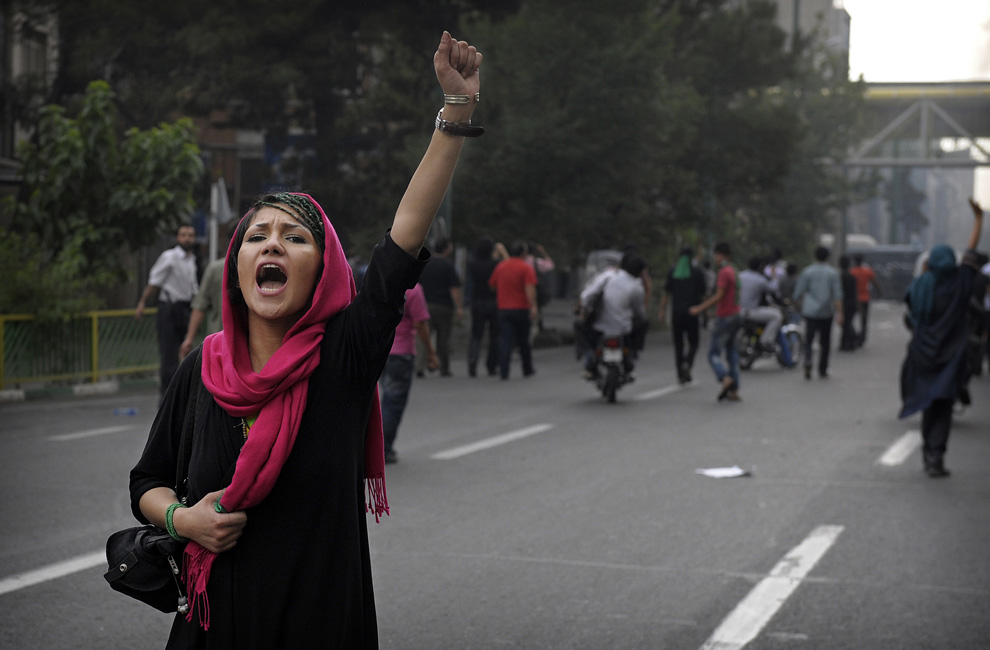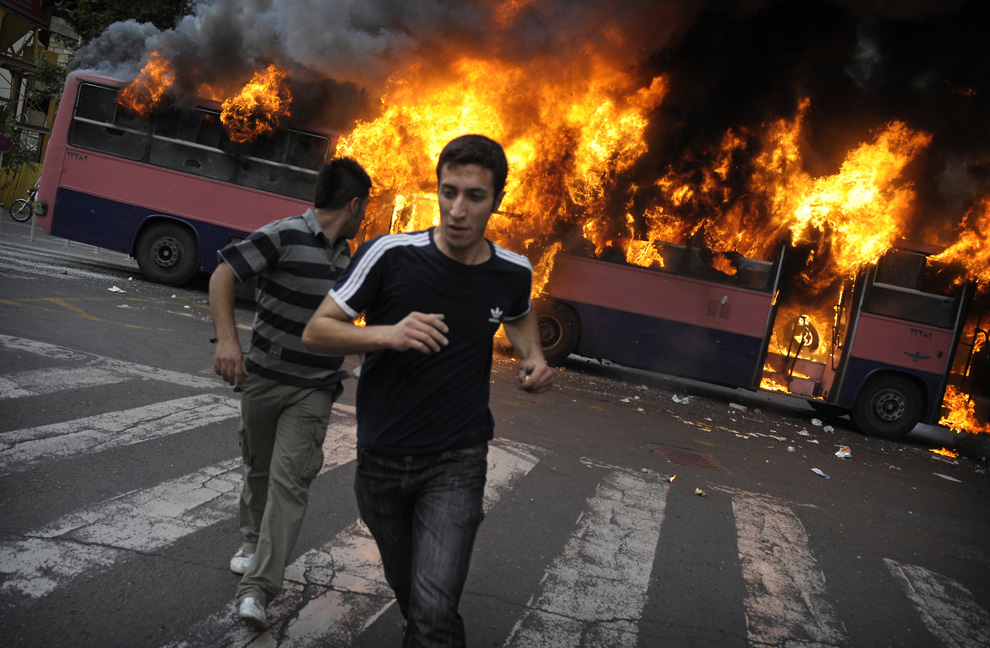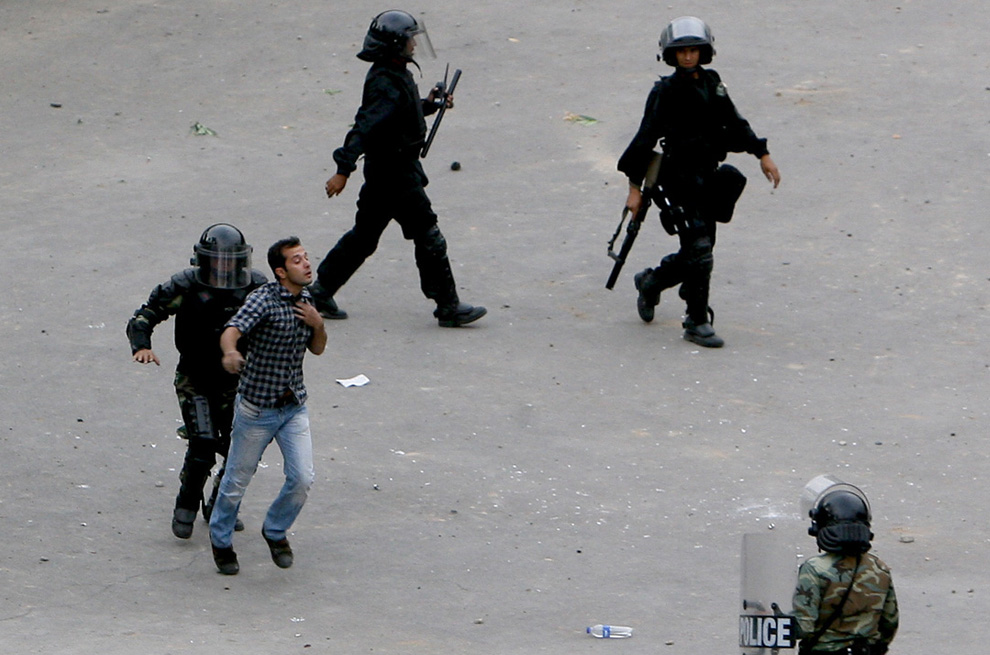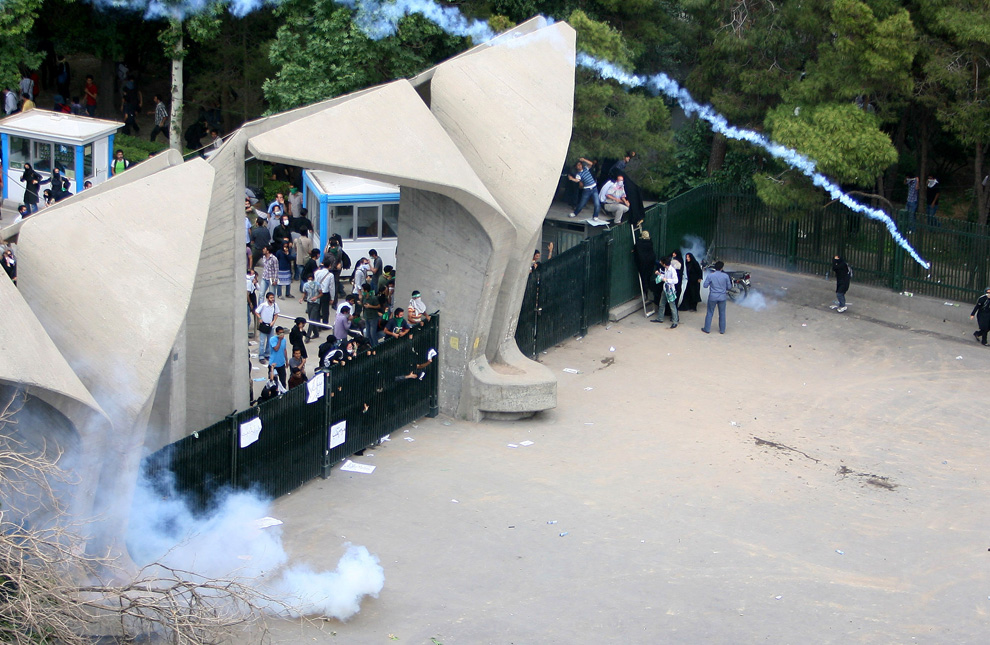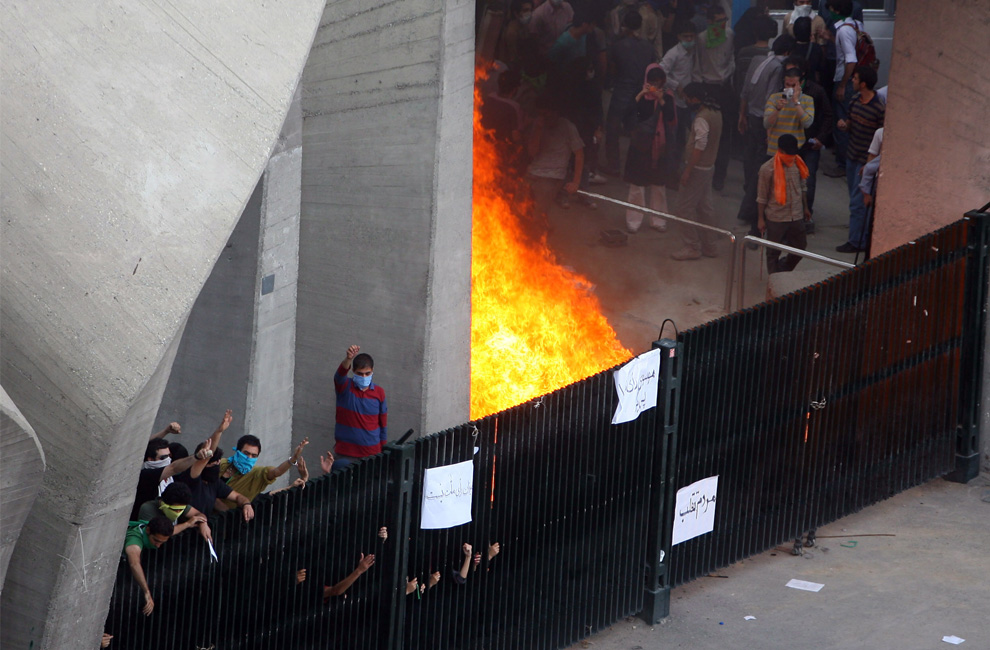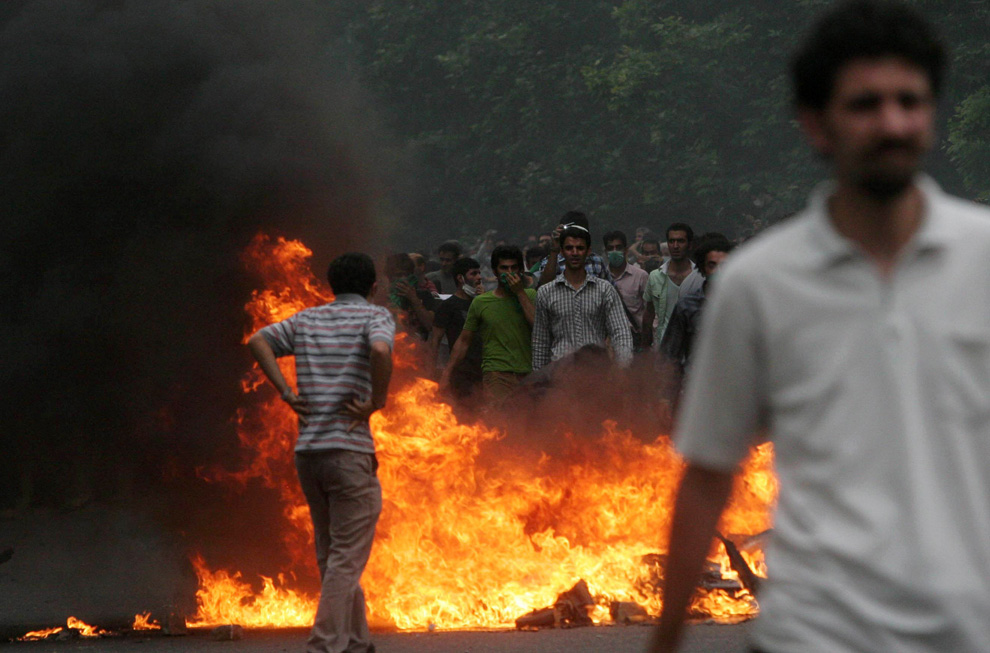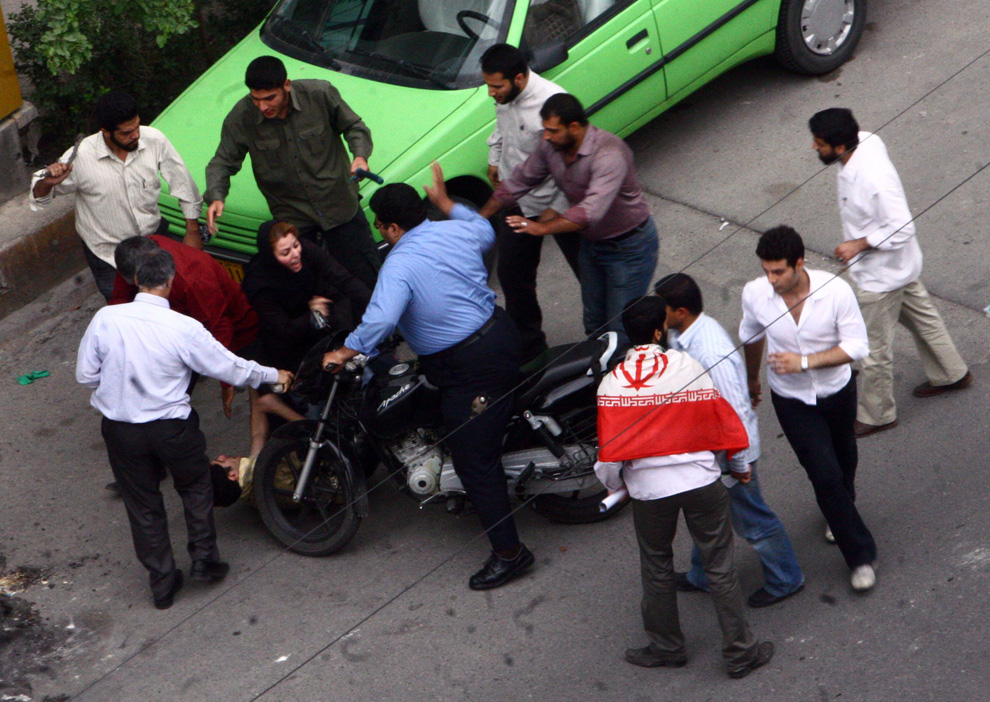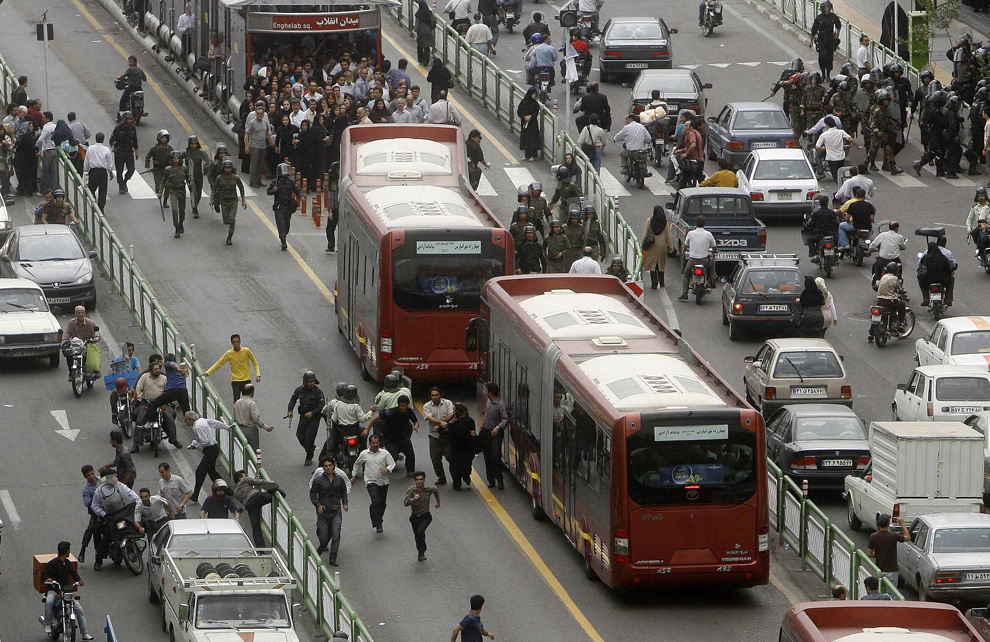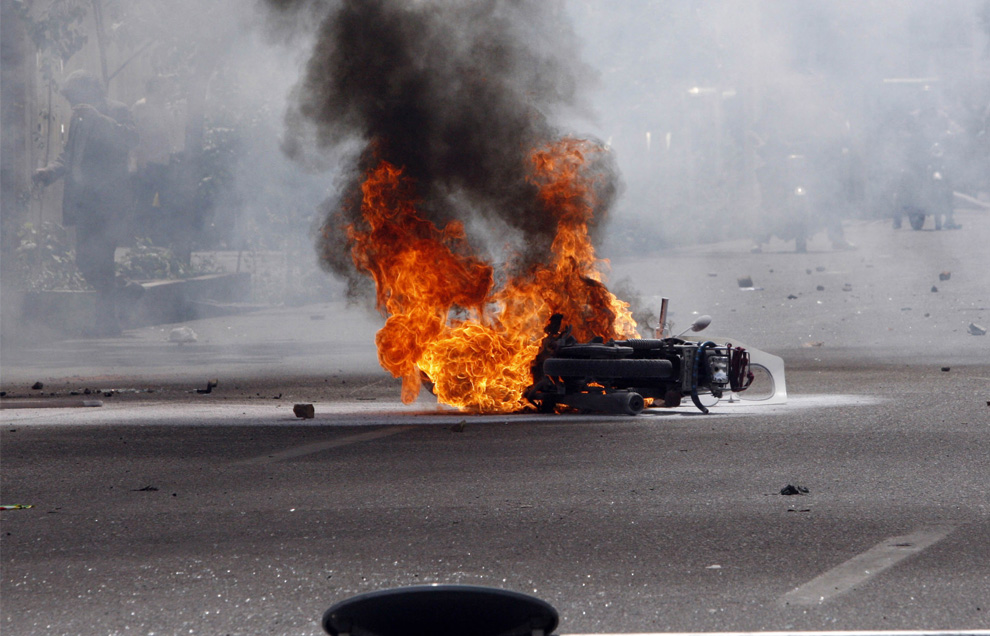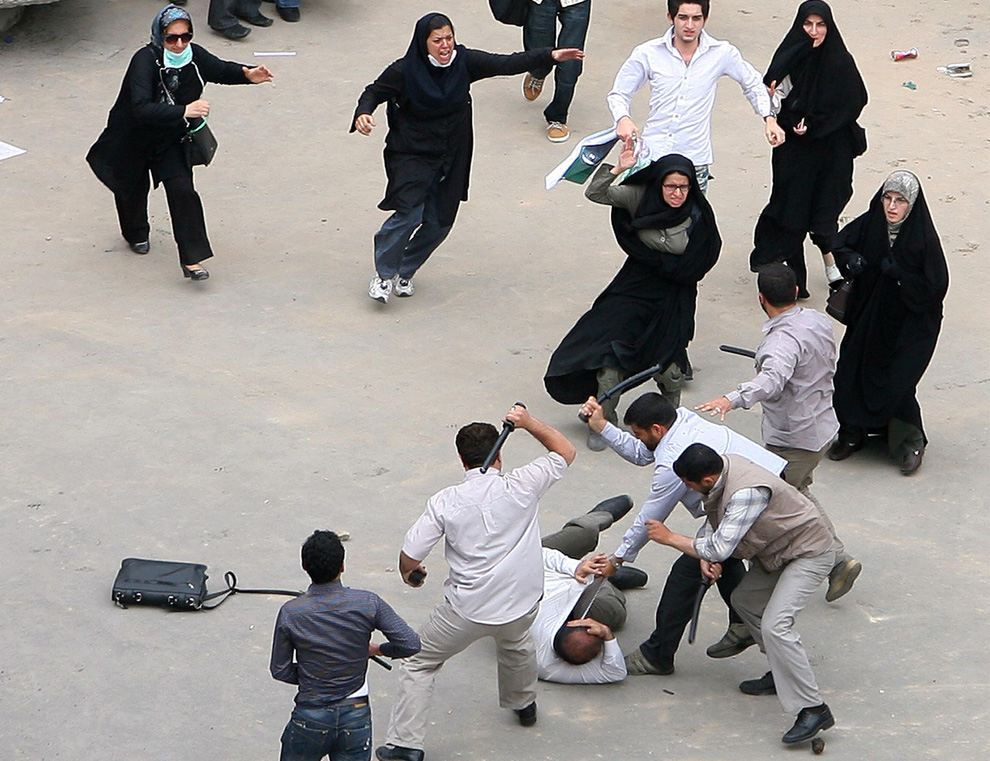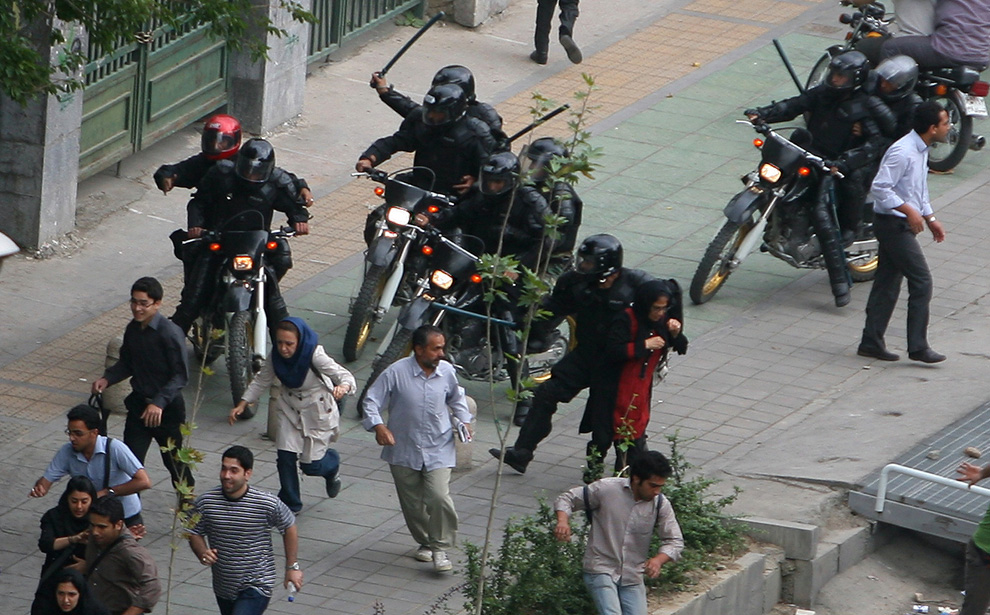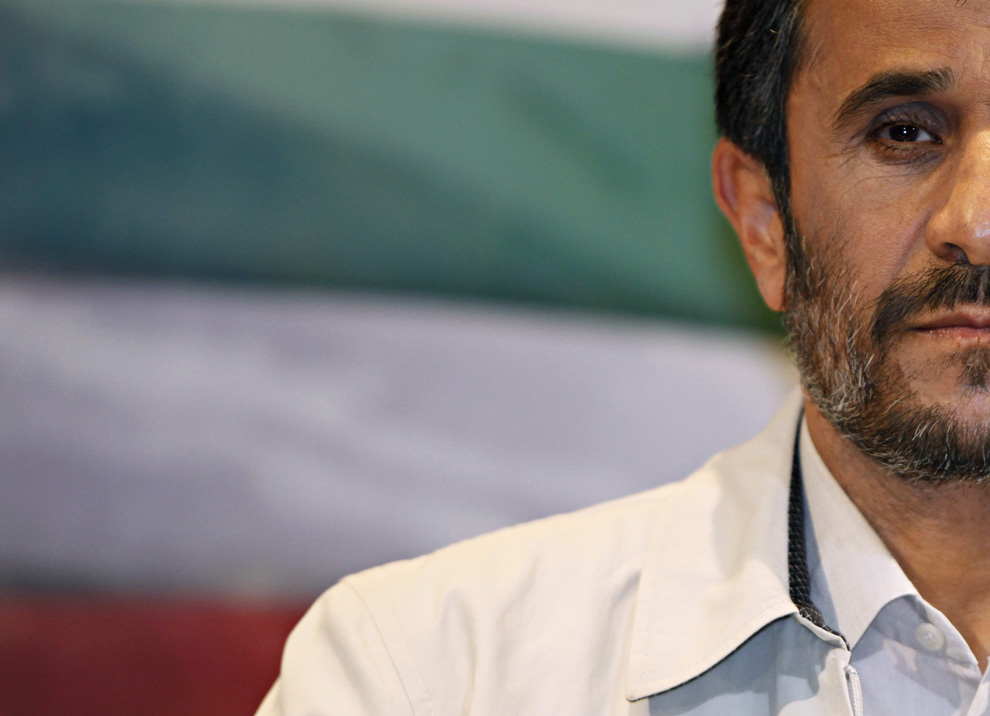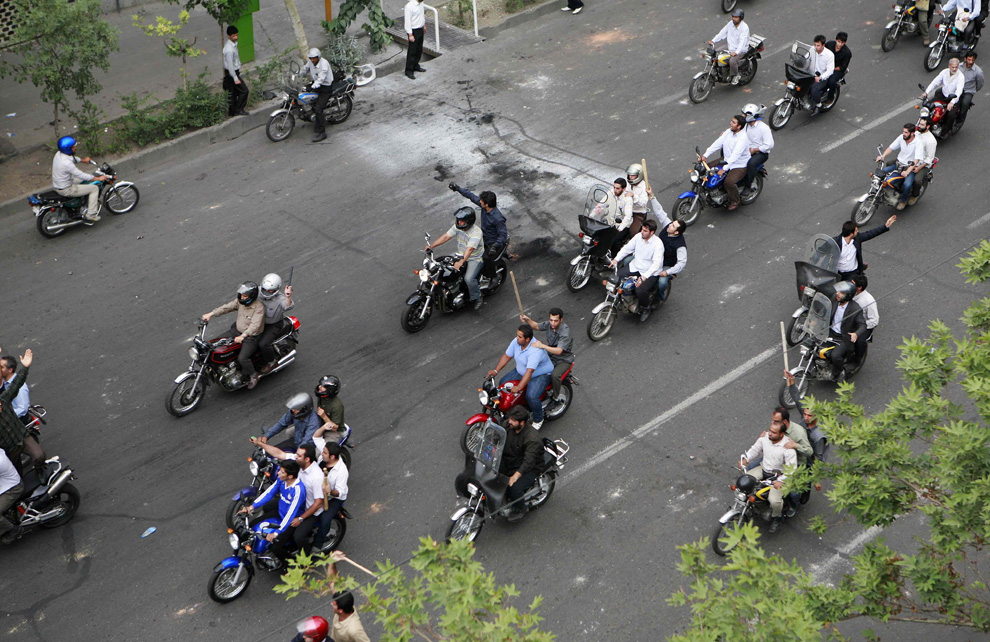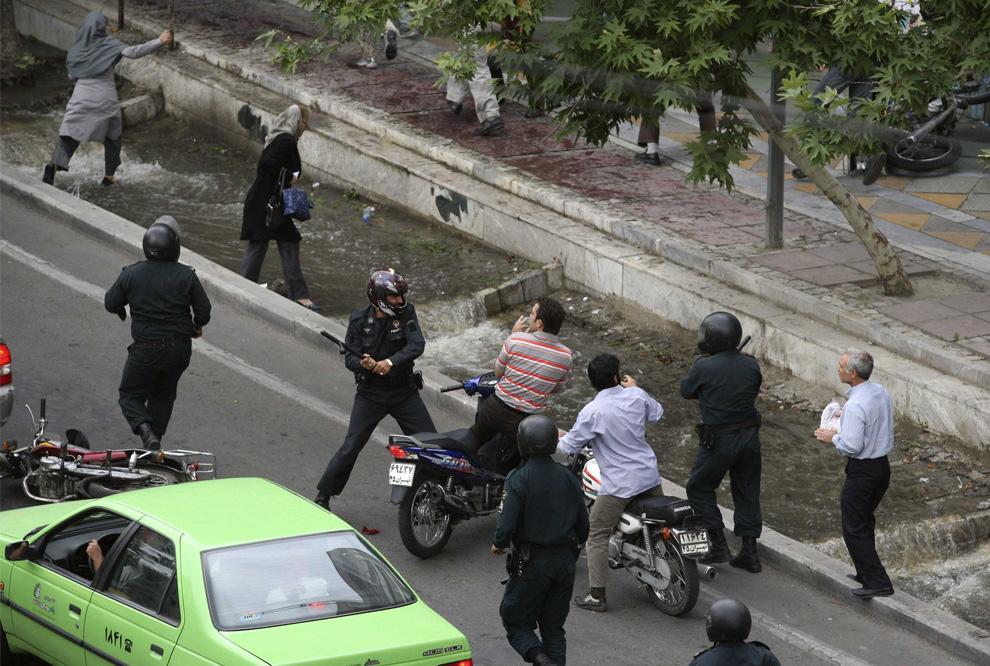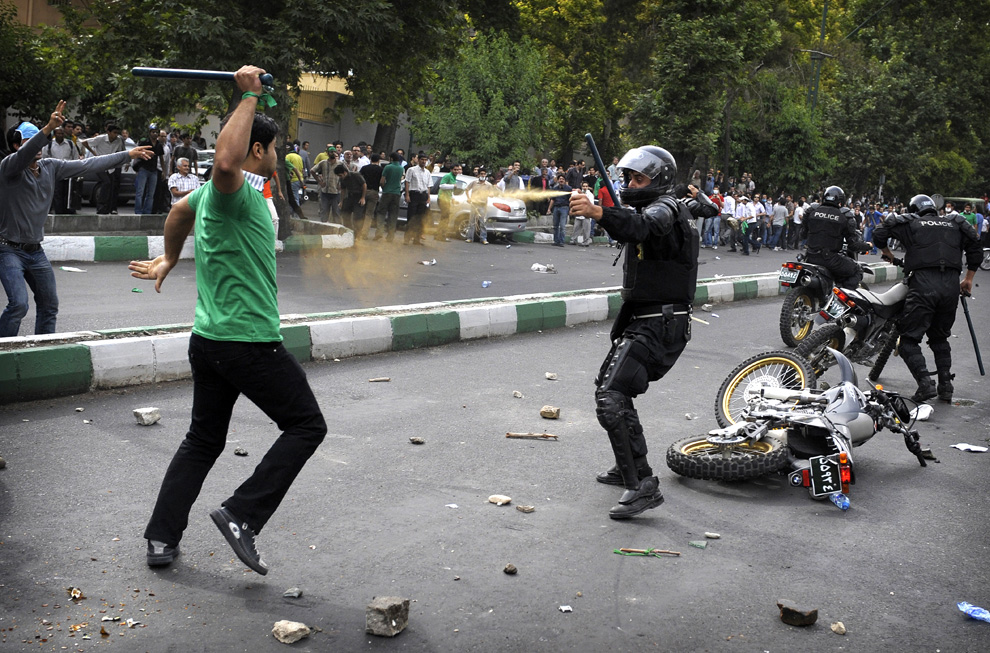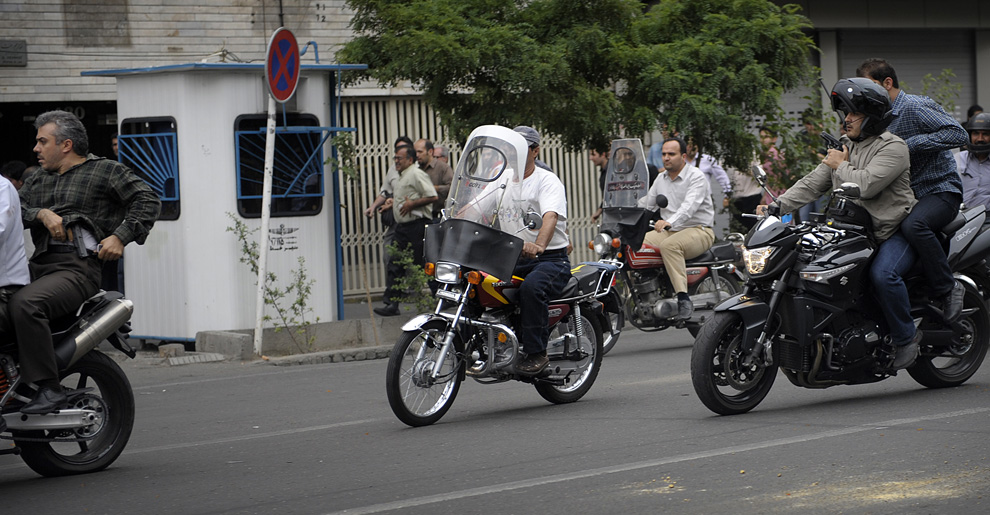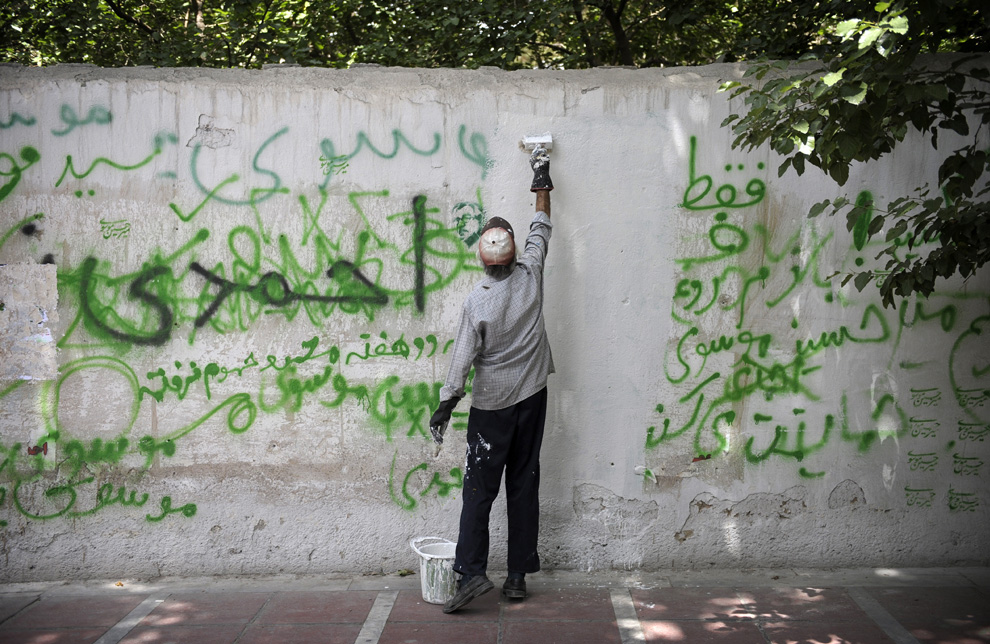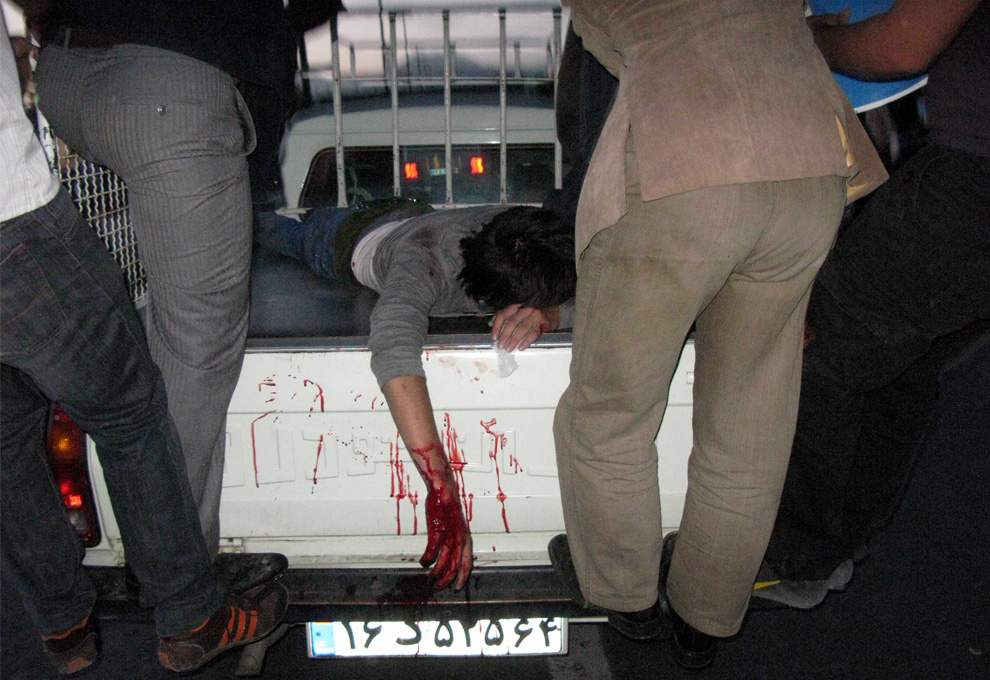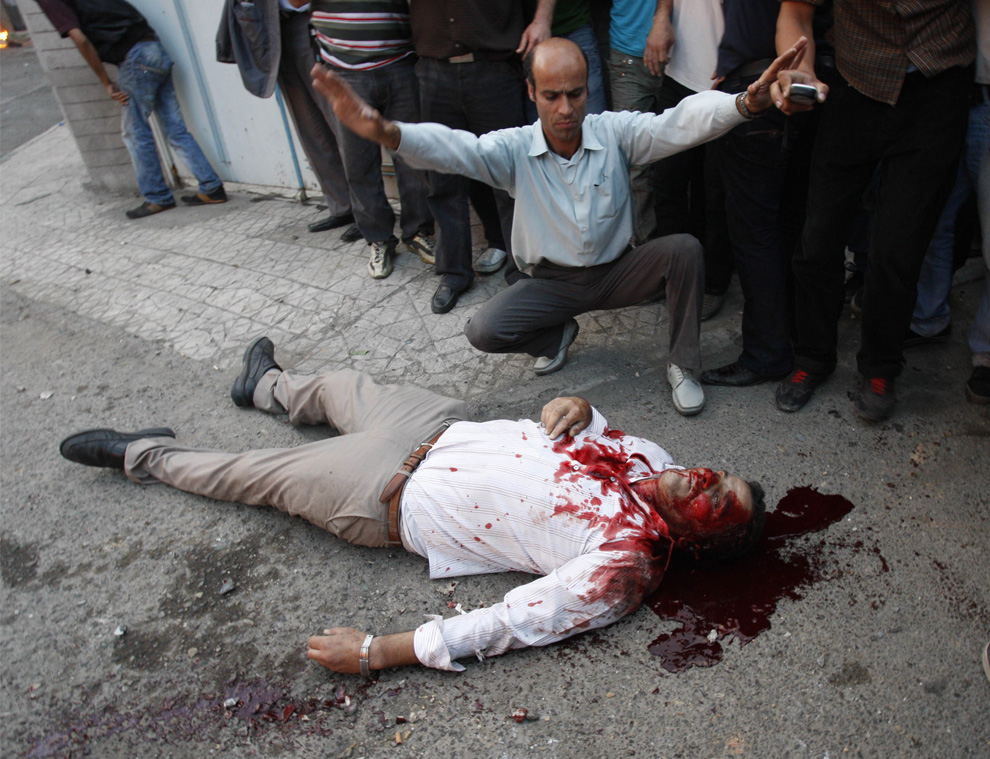“They are beating up people everywhere, drivers are blowing horns of their vehicle to protest the brutal repression” one eyewitness said.
In Tajrish square (northern Tehran) and nearby streets anti-riot units are stationed every few meters on both sides of the streets. They stop and check every passerby.Monday, June 29, 2009
Cell phone communications were cut off by the government preventing the protesters from spreading the news.
- On the 16th day of the Iranian people’s nationwide uprising, on Sunday evening, thousands of youths protested in Shariati Street in Tehran. Suppressive forces attacked the protestors with batons, tear gas, pepper spray, and water cannons in attempt to arrest them or force them to disperse.
 punishment was arrested. Mohammad Mostafaei is fighting for the rights of the
punishment was arrested. Mohammad Mostafaei is fighting for the rights of thechildren, who have commited crimes and are mostly before reaching the legal age,
and are mostly sentenced to death. Currently Mohammad is representing 25 cases.
>>> Mohammad Mostafaei, un avvocato che lotta per i diritti dei minori
condannati alla pena capitale, è stato arrestato. Mohammad Mostafaei lotta per i diritti dei bambini, che hanno commesso reati e sono per la maggior parte minorenni e sono per lo più condannati a morte.
Attualmente Mohammad rappresenta 25 casi.
>>>During the last days the follow-up of the families and friends of these arrested students to determine the status of these students has failed.
the authorities do not answer to specific health questions, regarding these students.
Names of some of the students arrested in Hamedan during recent 2 weeks include:
Amin Nazari (member of the Central Council Tahkime Vahdat))
Siavash Hatam (Secretary of Islamic Association of Students of Hamedan)
Reza Jafarian (Political Secretary)
Pooya Sharifian (union secretary)
Mehdi Mosafer (secretary of social and cultural)
Hojjat Bakhtiari (Central Council member)
Mostafa M. Zadeh
Mohammad Sayyadi
After the arrest of these activists, they were beaten by security forces and than delivered to the information-gattering body og Hamedan-City.
They are thrown in solitary confinement and have suffered severly.
- On Parkway right now people are beeping their horns, and basij has responded by smashing their windscreens and slashing their tires
- People had announced that they will form a human chain from Tajrish sq to Railway Today
- The cellphones are down in Valieasr street and surronding area.
- Police and plain clothes forces are settled across the Valiasr street to disallow the protesters to make a human-chain.
- Daneshju Park is full of Basij and special gaurds and militia forces are being organized in the park for dealing with the possible protest or human chain.
- Students of Science and Technology university put a photo of martyr Kianoosh Asa on the university's academic staff board..
- Office of the Islamic Association of Sistan and Baluchestan University set on fire by anonymous people.
- Alleis which are leading to Valieasr street are full of armed forces and Basij cyclists.
- There's some conflicts and militia forces are trying not to let people make the human chain.
- At Mellat park,Valieasr Sq,Vanak Sq and Valieasr street pedestrian way,people have took each other's hands and trying to make a human chain.
- Ayatollah Jannati,gaurdian council incharge person confirmed the election result.
- Important news: PersianKiwi is not arrested, but he does not have access to internet.

In the past few days,we have been attacked by Police and we had to move to new places to live and start out activities. Thanks for all your concerns and emails.I guess we'll be back to the normal situation in couple of hours...
Saeed Valadbaygi
. . .
>>>In addition, tear 240 and 209 and 2A of the infamous Evin prison, public section of this prison is used to place woman in. These are woman who are arrested in the
recent Tehran protests .
Considering that this facility is only considered to detain a limited numbers of female prisoners, and the with extensive wave of recent arrests of many women and Lack of space in this section
has indeed increased pressure on female prisoners
According to the latest received news, about sixty women detained in tear 3 are transfered to, female methadone patients section. The lack of capacity has resulted in alarge number of women newly transferred, sleep on the cprridors of the tears, with only in one blanket. Nothing alse.
These so called hallways (corridors) are only used in the 60´s and due to improper maintenance and lack of personal hygiene facilities, are suitable for women prisoners.
Ms. Maryam Ameri and Ms. Moghadam are among these prisoners. Women in this section include also, Bita Samimi Zad and Frynaz Miryan. Two active members of the protesting-student-body.
They were kept in these horrible conditions untill two days ago and were transfered to solitary confinement without any reason.
Another notable issue in this facility, is the large number of the women prisoners who are injured durring the latest protests.
Please note that the above mentioned statistics is only a tiny part of arrested women in recent days. In many other tears of the Evin prison, there are no information leaked, due to the highest level of security.
Sunday, June 28, 2009
Iranian police clash with up to 3,000 protesters
Riot police clashed with up to 3,000 protesters near a mosque in north Tehran on Sunday, using tear gas and truncheons to break up Iran's first post-election demonstration in five days, witnesses said.
Witnesses told The Associated Press that some protesters fought back, chanting: "Where is my vote?" They said others described scenes of brutality — including the alleged police beating of an elderly woman — in the clashes around the Ghoba Mosque.
The reports could not immediately be independently verified because of tight restrictions imposed on journalists in Iran.
North Tehran is a base of support for opposition leader Mir Hossein Mousavi, who has alleged massive fraud in Iran's disputed June 12 presidential election and insists he — not President Mahmoud Ahmadinejad — is the rightful winner.
Sunday's clashes broke out at a rally that had been planned to coincide with a memorial held each year for Ayatollah Mohammad Beheshti, who came to be considered a martyr in the Islamic Republic after he was killed in a 1981 anti-regime bombing.
It was Iran's first election-related unrest since Wednesday, when a small group of rock-throwing protesters who had gathered near parliament was quickly overwhelmed by police forces using tear gas and clubs.
Iran's standoff with the West over its crackdown on opposition protesters escalated Sunday after authorities detained several local employees of the British Embassy in Tehran — a move that Britain's foreign secretary called "harassment and intimidation." The European Union condemned the arrests.
Iranian media said eight local embassy staff were detained for an alleged role in postelection protests, but gave no further details. British Foreign Secretary David Miliband said "about nine" employees were detained Saturday and that four had been released.
EU foreign ministers meeting in Corfu, Greece, issued a statement Sunday condemning the arrests and calling for the immediate release of all those still detained. The 27-nation bloc also denounced Iran's continuing restrictions on journalists.
"They make clear to the Iranian authorities that harassment or intimidation of foreign or Iranian staff working in embassies will be met with a strong and collective EU response," the statement said.
Iran has accused the West of stoking unrest, singling out Britain and the U.S. for alleged meddling and for expressing concern about the ferocity of the regime's crackdown on protesters. Last week, Iran expelled two British diplomats, and Britain responded in kind. Iran has also said it's considering downgrading diplomatic ties with Britain.
On Sunday, the semiofficial Fars news agency reported that the embassy staffers were detained for what was described as a "significant role" in postelection unrest.
The British Foreign Office says the embassy has a staff of more than 100, including at least 70 locally hired Iranians. Last week, Britain sent home 12 dependents of embassy staff because the protests had disrupted their lives.
Miliband, in Corfu for the EU meeting, said Britain lodged a protest with the Iranian authorities over the detentions. He described the step as "harassment and intimidation of a kind that is quite unacceptable."
"The idea that the British Embassy is somehow behind the demonstrations and protests that have been taking place in Tehran. ... is wholly without foundation," he said.
Iran's government has tried to discredit opposition supporters by alleging they have been directed by the West.
On Friday, a senior Iranian cleric, Ahmed Khatami, lashed out at Britain in a nationally televised sermon. "In this unrest, Britons have behaved very mischievously and it is fair to add the slogan of 'down with England' to the slogan of 'down with USA,'" he said.
Britain, a former colonial power in the region with a long history in Iran, has been a prominent target. Britain and the U.S. were behind the 1953 coup that toppled Prime Minster Mohammad Mossadegh, who nationalized Iran's oil industry. Britain had almost complete control over Iran's oil industry for decades.
The British have also drawn fire because of the BBC's prominent role as a trusted broadcaster in Farsi inside Iran.
This is a reversal from the way the state and publicly funded BBC was perceived in the run-up to the Iranian Islamic Revolution. At the time, the BBC was widely listened to because it extensively covered anti-Shah demonstrations and activities of the Islamic Republic's founder, Ayatollah Ruhollah Khomeini, who was in exile in France.
Iran's leaders have countered Western condemnation with increasingly angry rhetoric. The confrontation appears to be dashing hopes for a new dialogue, as initially envisioned by President Barack Obama when he took office.
Obama wants to engage Iranian leaders in talks over the country's suspect nuclear program which the U.S. and other western countries worry is aimed at developing nuclear weapons. Iran defends its nuclear program as civilian in nature. On Sunday, EU foreign policy chief Javier Solana said the bloc would "like very much" to restart nuclear talks with Tehran despite the rising tensions.
Senior White House adviser David Axelrod played down Ahmadinejad's accusations against the U.S., saying Sunday they aren't credible and are meant for domestic consumption. "This is political theater," he said on ABC's "This Week."
Iran's rulers have unleashed club-wielding militiamen to crush street protests and arrested hundreds of journalists, students and activists.
On Sunday, Iran's supreme leader, Ayatollah Ali Khamenei, called for national unity, appealing to both sides in the dispute, even though he has come down firmly on the side of Ahmadinejad.
"I admonish both sides not to stoke the emotions of the young or pit the people against each other," he said in comments carried on state TV. "Our people are made of one fabric."
Mousavi signaled he is not dropping his political challenge.
In a new statement, he insisted on a repeat of the election and rejected a partial recount being proposed by the government. However, Mousavi's challenge seemed largely aimed at maintaining some role as an opposition figure.
The latest statement by Mousavi, who has been increasingly isolated, appeared Sunday on Ghalamnews, a Web site run by supporters. Mousavi-related Web sites have frequently been blocked by the government, and one was shut down by hackers last week
Saturday, June 27, 2009
Battered Body of Iranian Activist Discovered at Tehran Morgue
Saturday, June 27, 2009
Democracy activist Kianoosh Assa disappeared days ago.Yesterday his battered body was discovered at the Tehran coronor's morgue.

The battered body of disappeared activist Kianoosh Assa, student at college of Science & Industry, resident of Kermanshah, senior in chemical engineering was found after days of searching by his family, in the Tehran coroners morgue. He went missing on Monday, June 22nd. Coroner is refusing to return his body to his family as he has no i.d. on him and has been classified as UNKNOWN.
Outside of Tehran University where 5 students were brutally murdered by the basij and countless other horrors took place, people hold an illegal candlelight vigil. There is a voice of a man in the background warning the people that they will get caught, but no one seems to care. Also, pay attention to all the camera phones documenting the event. If the vigil doesn't make you sad, that should because that is the only connection they have now to the outside world
Thursday, June 25, 2009
Iran arrests 70 professors after meeting with opposition leader

Iran's supreme leader vowed Wednesday that he would neither reconsider vote results nor bow to public pressure over the disputed reelection of his ally, President Mahmoud Ahmadinejad.
Wednesday, June 24, 2009
CRACKDOWN IN TEHRAN-- A wounded woman is treated at Baharestan Square in Tehran
This is an amazing report!
>In Baharestan Square the Police are shooting. A girl is shot and the police are not allowing to let the people help them.
>Cell network down in Baharestan & nearby area
>Conflict still in Baharestan Sq they even people who talk with their cellphone
>The girl who was shot was taken to a private clinic, not known yet of her well being...alive or not?
>People gathered in Baharestan but police & plain cloths don't let the core of the rally to form
>All shops and Passages are closed at Baharestan SQ, Gunshot being heard from Jomhori St
> Gunshot being heard at Baharestan Square.
>About 5,000 Protesters gatherd at Sadeghieh Sq, Bassij and Hezbollah attcking them
>Hezbollah Attcked to some people trying to gather at Tajrish Square
>Army Helycopters flying over Enghelab Sq. Army Vans moving toward Azadi St with heavy Machine Guns.
>Hezbollah Attcked to some people trying to gather at Tajrish Sq.
>Protesters gatherd at Sepah Sq
>More than 3 people have been shot in Baharestan's conflict, The shooting is still continues and conflicts increasing!!!!

Protesters carry an injured man in a recent protest in Tehran. (Iran Press News)
Monday, June 22, 2009
In Iran, One Woman's Death May Have Many Consequences
  Iran's revolution has now run through a full cycle. A gruesomely captivating video of a young woman - laid out on a Tehran street after apparently being shot, blood pouring from her mouth and then across her face - swept Twitter, Facebook and other websites this weekend. The woman rapidly became a symbol of Iran's escalating crisis, from a political confrontation to far more ominous physical clashes. Some sites refer to her as "Neda," Farsi for the voice or the call. Tributes that incorporate startlingly upclose footage of her dying have started to spring up on YouTube. Although it is not yet clear who shot "Neda" (a soldier? pro-government militant? an accidental misfiring?), her death may have changed everything. For the cycles of mourning in Shiite Islam actually provide a schedule for political combat - a way to generate or revive momentum. Shiite Muslims mourn their dead on the third, seventh and 40th days after a death, and these commemorations are a pivotal part of Iran's rich history. During the revolution, the pattern of confrontations between the shah's security forces and the revolutionaries often played out in 40-day cycles. (See pictures of terror in the streets of Tehran.) The first clashes in January 1978 produced two deaths that were then commemorated on the 40th day in mass gatherings, which in turn produced [COLOR=#000000! important]new[COLOR=#000000! important] confrontations[/COLOR][/COLOR] with security forces - and new deaths. Those deaths then generated another 40-day period of mourning, new clashes, and further deaths. The cycle continued throughout most of the year until the shah's ouster in January 1979. The same cycle has already become an undercurrent in Iran's current crisis. The largest demonstration, on Thursday of last week, was called by opposition leader Mir Hossein Mousavi to commemorate the deaths of protesters three days after they were killed. Shiite mourning is not simply a time to react with sadness. Particularly in times of conflict, it is also an opportunity for renewal. The commemorations for "Neda" and the others killed this weekend are still to come. And the 40th day events are usually the largest and most important. "Neda" is already being hailed as a martyr, a second important concept in Shiism. With the reported deaths of 19 people Saturday, martyrdom also provides a potent force that could further deepen public anger at Iran's regime. (See the Top Ten Players in Iran's Power Struggle.) The belief in martyrdom is central to modern politics as well as Shiite tradition dating back centuries in Iran. It too helped propel the 1979 revolution. It sustained Iran during the eight-year war with Iraq, when over 120,000 Iranians died in the bloodiest modern Middle East conflict. Most major Iranian cities have a Martyrs' Museum or a Martyrs' cemetery. The first Shiite martyr was Hussein, the prophet Mohammed's grandson. He believed it was better to die fighting injustice than to live with injustice under what he believed was illegitimate rule. In the seventh century, Hussein and a band of fewer than 100 people, including women and children, took on the mighty Umayyad dynasty in Karbala, an ancient city in Mesopotamia now in modern-day Iraq. They knew they would be massacred. Fourteen centuries later, Hussein's tomb in Karbala is one of the two holiest Shiite shrines - and millions of Iranians still make pilgrimages there every year. Just as Christians reenact Jesus' procession bearing the cross past the fourteen stops to Calvary before his crucifixion, so too do Shiites every year reenact Hussein's martyrdom in an Islamic passion play during the holy period of Ashura. Because of Hussein, revolt against tyranny became part of Shiite tradition. Indeed, protest and martyrdom are widely considered duties to God. And nowhere is the practice more honored than in Iran, the world's largest Shiite country. The revolutionaries exploited the deep passion about martyrdom as well as the timetable of Shiite mourning in whipping up greater opposition to Shah Mohammed Reza Pahlavi. With the deaths of "Neda" and others, they may now find the same phenomena used against them. | |
    |
Saturday, June 20, 2009
Killing a young girl in front of her father's eyes
basij shots to death a young woman in Tehran's Saturday June 20th protests
At 19:05 June 20th
Place: Karekar Ave., at the corner crossing Khosravi St. and Salehi st.
A young woman who was standing aside with her father watching the protests was shot by a basij member hiding on the rooftop of a civilian house. He had clear shot at the girl and could not miss her. However, he aimed straight her heart. I am a doctor, so I rushed to try to save her. But the impact of the gunshot was so fierce that the bullet had blasted inside the victim's chest, and she died in less than 2 minutes.while her father's asked hers to stay alive.
The protests were going on about 1 kilometers away in the main street and some of the protesting crowd were running from tear gass used among them, towards Salehi St.
The film is shot by my friend who was standing beside me.
Please let the world know.
Thursday, June 18, 2009
Wednesday, June 17, 2009
Monday, June 15, 2009
Iran's Disputed Election
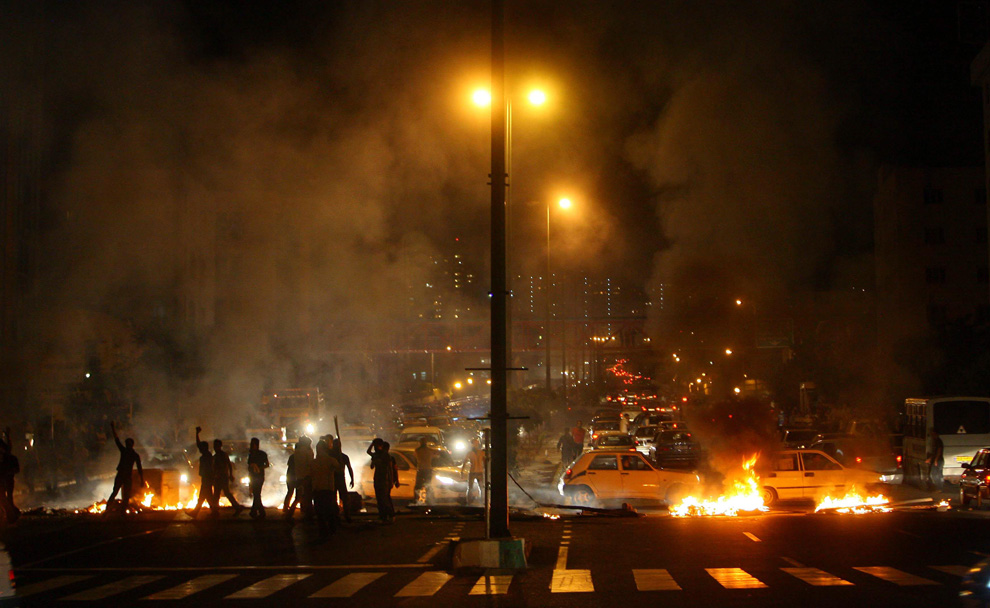
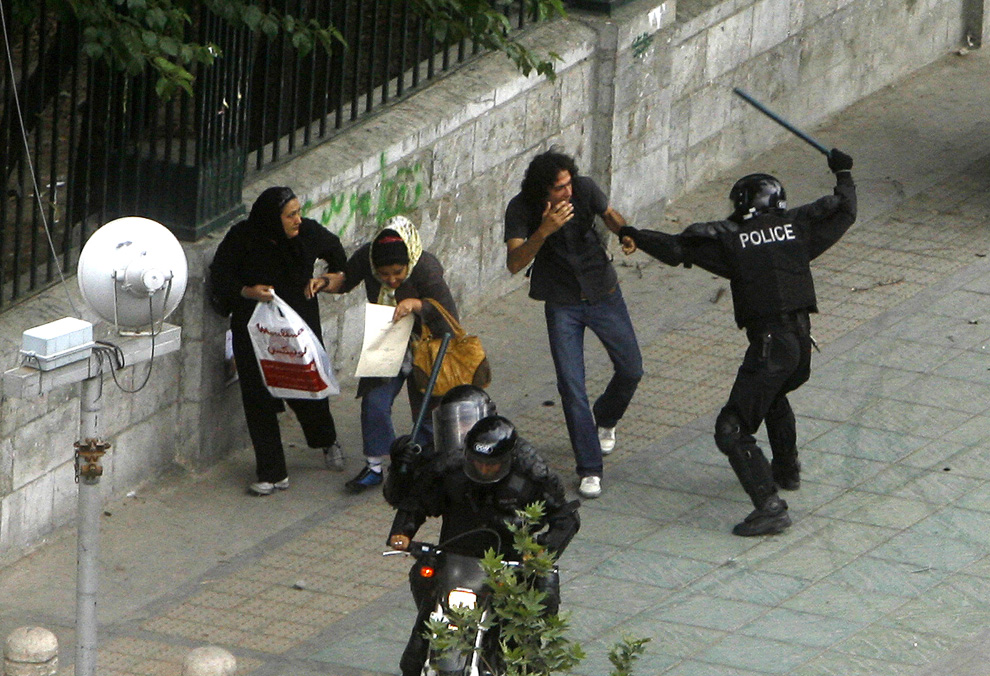


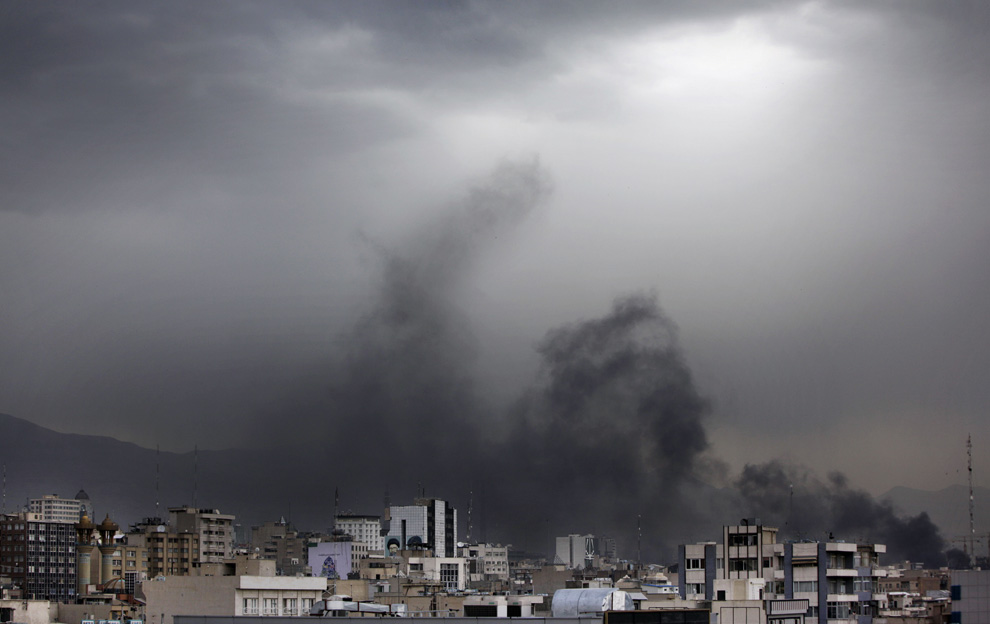
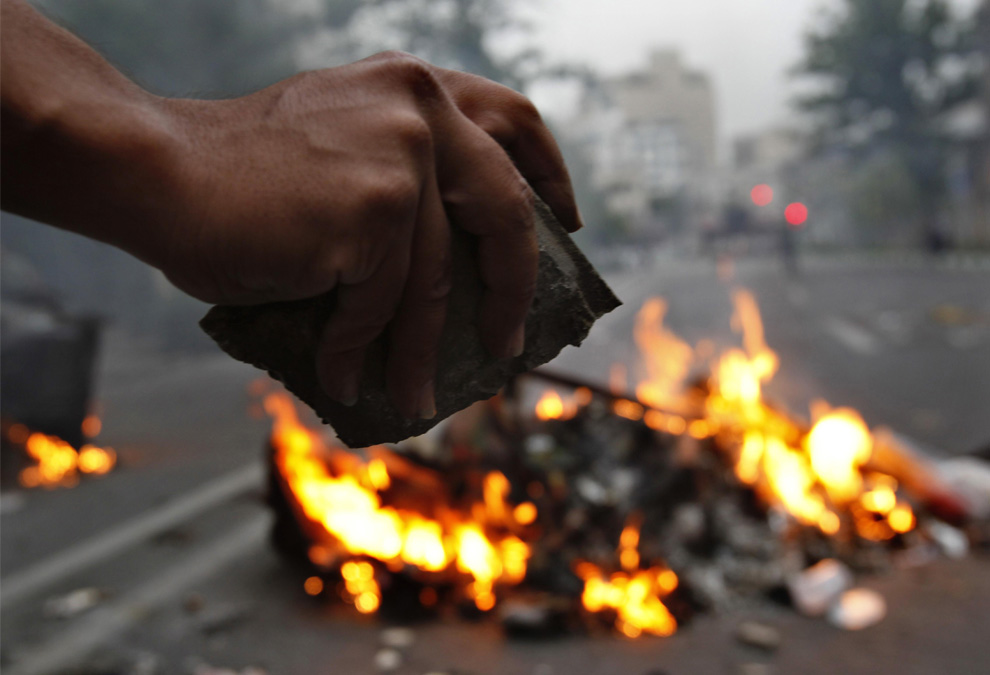
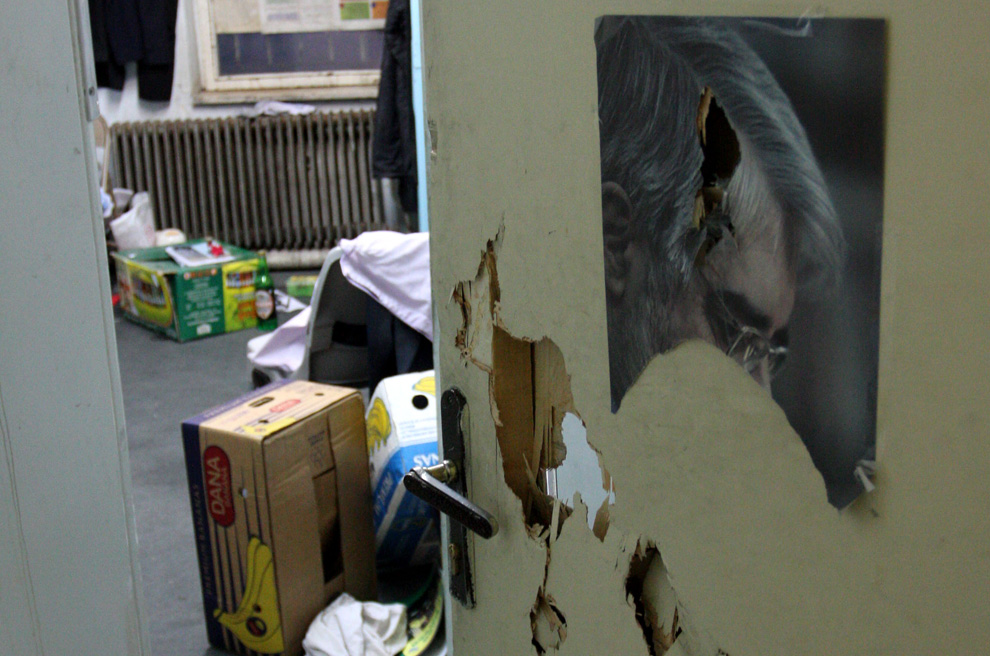

Update, 2:30pm Eastern time - several photos of injured and one dead from gunshots at today's rally.








